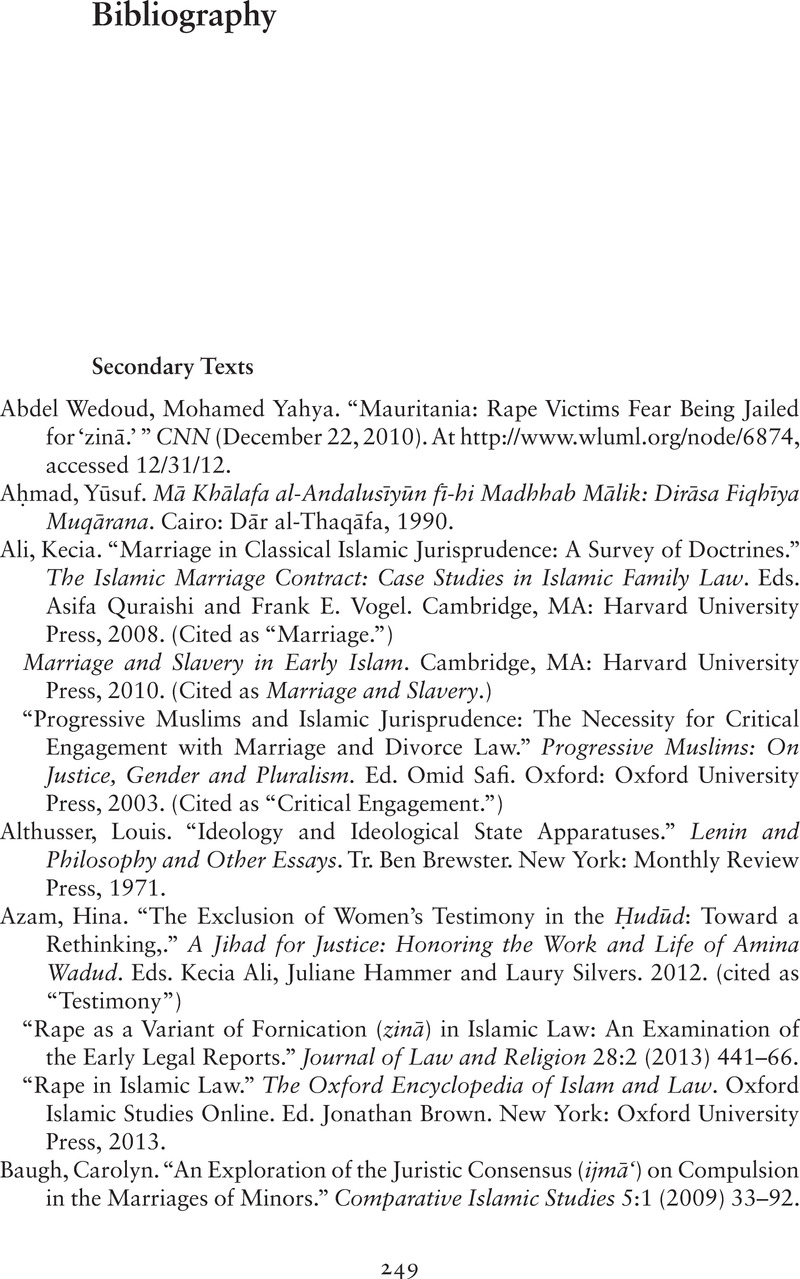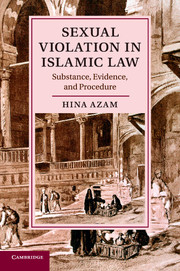Book contents
- Sexual Violation in Islamic Law
- Cambridge Studies in Islamic Civilization
- Sexual Violation in Islamic Law
- Copyright page
- Contents
- Acknowledgments
- Introduction
- 1 Sexual Violation in the Late Antique Near East
- 2 Tracing Rape in Early Islamic Law
- 3 Rape as a Property Crime: The Mālikī Approach
- 4 Rape as a Moral Transgression: The Ḥanafī Approach
- 5 Proving Rape in Ḥanafī Law: Substance, Evidence, and Procedure
- 6 Proving Rape in Mālikī Law: Evidence, Procedure, and Penalty
- Conclusion
- Bibliography
- Index
- Other Title in the Series
- References
Bibliography
Published online by Cambridge University Press: 05 July 2015
- Sexual Violation in Islamic Law
- Cambridge Studies in Islamic Civilization
- Sexual Violation in Islamic Law
- Copyright page
- Contents
- Acknowledgments
- Introduction
- 1 Sexual Violation in the Late Antique Near East
- 2 Tracing Rape in Early Islamic Law
- 3 Rape as a Property Crime: The Mālikī Approach
- 4 Rape as a Moral Transgression: The Ḥanafī Approach
- 5 Proving Rape in Ḥanafī Law: Substance, Evidence, and Procedure
- 6 Proving Rape in Mālikī Law: Evidence, Procedure, and Penalty
- Conclusion
- Bibliography
- Index
- Other Title in the Series
- References
Summary

- Type
- Chapter
- Information
- Sexual Violation in Islamic LawSubstance, Evidence, and Procedure, pp. 249 - 260Publisher: Cambridge University PressPrint publication year: 2015



